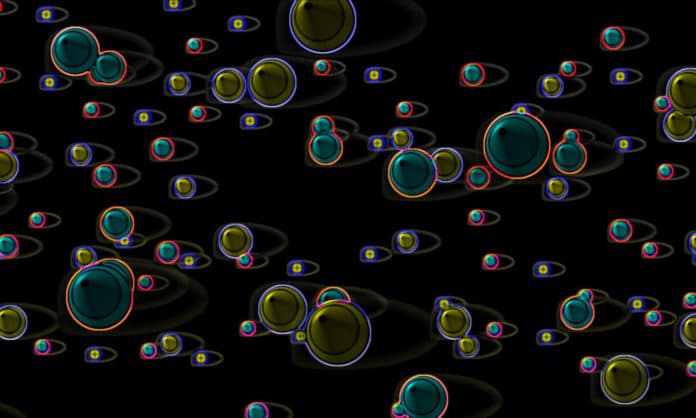Helium-3 is a light, stable isotope of helium with two protons and one neutron. It becomes superfluid at extremely low temperatures, enabling unusual properties such as a lack of friction for moving objects.
It was believed that the speed of objects traveling through superfluid helium-3 was essentially restricted to the critical Landau velocity and that surpassing this speed limit would destroy the superfluid.
A new stud by the scientists from Lancaster University found why objects moving through superfluid helium-3 lack a speed limit.
Scientists found that the absence of the speed limit: exotic particles that stick to all surfaces in the superfluid.
The scientists cooled superfluid helium-3 to within one ten-thousandth of a degree from absolute zero (0.0001K or – 273.15°C). They then moved a wire through the superfluid at high speed and estimated how much force was expected to move the wire. Aside from a small force related to moving the bound particles around when the wire starts to move, the measured force was zero.
Lead author Dr. Samuli Autti said: “Superfluid helium-3 feels like a vacuum to a rod moving through it, although it is a relatively dense liquid. There is no resistance, none at all. I find this very intriguing.”
Ph.D. student Ash Jennings added: “By making the rod change its direction of motion, we were able to conclude that the rod will be hidden from the superfluid by the bound particles covering it, even when its speed is very high.”
Dr. Dmitry Zmeev, who supervised the project, said, “The bound particles initially need to move around to achieve this, and that exerts a tiny force on the rod, but once this is done, the force just completely disappears.”
The discovery may guide quantum technology applications, even quantum computing, where multiple research groups already aim to use these unusual particles.
Other co-authors of the study included Samuli Autti, Sean Ahlstrom, Richard Haley, Ash Jennings, George Pickett, Malcolm Poole, Roch Schanen, Viktor Tsepelin, Jakub Vonka, Tom Wilcox, Andrew Woods, and Dmitry Zmeev. The results are published in Nature Communications.
